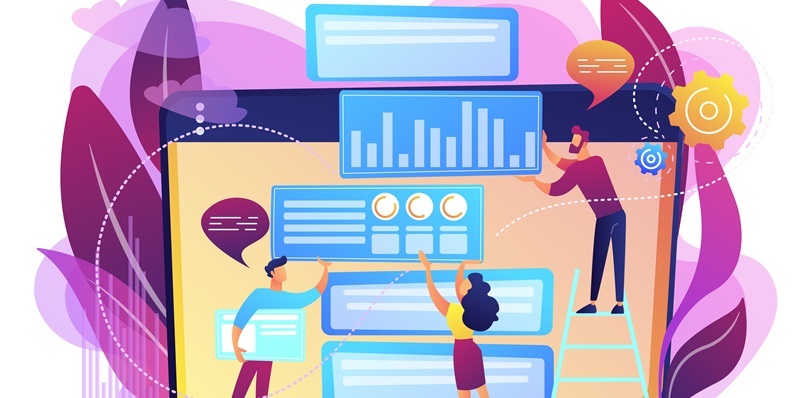In today’s competitive marketplace, loyalty is the not-so-secret ingredient to running a successful consumer business. Acquiring new customers is undoubtedly important, but it comes at a steep cost, as studies suggest that it is five times more expensive than retaining existing customers. In this article, we will explore the role of a Customer Data Platform (CDP) in delivering personalized experiences at scale, the key questions about customers that enhance loyalty program effectiveness, and various strategies to cultivate and nurture customer loyalty.
The Importance of Loyalty in Consumer Businesses
Loyalty is the lifeblood of any consumer business. Building a loyal customer base not only boosts revenue but also improves brand reputation and drives sustainable growth. Loyal customers are more likely to make repeat purchases, refer others, and have a higher lifetime value. By focusing on enhancing customer loyalty, businesses can create a strong foundation for long-term success.
The Cost-Effectiveness of Retaining Existing Customers
As mentioned earlier, acquiring new customers is a costly endeavor. On the other hand, retaining existing customers proves to be a more cost-effective strategy. By employing loyalty initiatives, businesses can cultivate strong relationships with their customer base and reduce churn rates. This, in turn, helps maximize profits and maintain a steady revenue stream.
The Role of a Customer Data Platform (CDP) in Delivering Personalized Experiences
A Customer Data Platform (CDP) empowers marketers with the understanding they need to deliver personalized experiences at scale. By aggregating and organizing customer data from various sources, CDPs create a unified customer profile. This comprehensive view enables businesses to effectively segment their customer base, understand individual preferences, and tailor their offerings accordingly. By utilizing a CDP, businesses can unlock the power of personalization and create meaningful connections with their customers.
Key questions about customers that enhance loyalty program effectiveness
To design a successful loyalty program, businesses must be able to answer key questions about their customers. Understanding factors such as what motivates customers, their preferred channels of communication, their purchase behavior, and their demographics helps in crafting targeted and relevant loyalty initiatives. By delving deep into customer insights, businesses can create loyalty programs that resonate with their customer base.
Using Personalization to Entice Customers to Join Loyalty Programs
One effective way to drive customer engagement and entice them to join loyalty programs is through personalization. By tailoring offers and exclusive benefits based on customer preferences and purchase history, businesses can create a sense of exclusivity and make customers feel valued. Personalization instills a sense of trust and fosters customer loyalty, thereby encouraging customers to become program members.
Identifying high-value customers and finding similar customers through lookalike audiences
Identifying high-value customers is critical for the success of any loyalty program. These customers not only contribute significantly to a business’s revenue but also serve as brand ambassadors. By leveraging customer data, businesses can identify their most valuable customers and understand their characteristics and behaviors. This information can then be used to build lookalike audiences, enabling businesses to find customers with similar attributes and target them effectively.
Leveraging key moments in the customer journey to foster loyalty
Every customer goes through a journey with a business, from initial awareness to purchase and beyond. By identifying key moments in this journey, businesses can create opportunities to make a lasting impression and nurture loyalty. For example, sending personalized thank-you emails after purchases, offering birthday rewards, or providing exclusive updates on upcoming products can go a long way in strengthening the bond between businesses and their customers.
Expanding Loyalty Programs to Engage Customers Across Channels
To increase customer engagement, it is essential to bring loyalty programs to members across channels. Whether it’s through a mobile app, website, or in-store experience, businesses should strive to offer a seamless and consistent loyalty program experience. This multi-channel approach not only increases customer convenience but also opens up more avenues to interact with and delight customers.
Testing and Experimenting with Loyalty Strategies for Improved Personalization
To continually improve loyalty programs, businesses should regularly test and experiment with various strategies. A customer-centric approach involves gathering feedback, analyzing data, and iterating on loyalty initiatives. By monitoring consumer response and making data-driven adjustments, businesses can enhance personalization, optimize rewards, and ensure that their loyalty programs remain effective and relevant.
Using a CDP to Tailor Strategies and Tactics Based on Customer Behavior
Ultimately, a Customer Data Platform (CDP) allows businesses to craft strategies and tactics based on customer behavior and speak to them individually. By utilizing the insights offered by a CDP, businesses can customize marketing efforts, deliver personalized messaging, and anticipate customer needs. This tailored approach not only establishes strong customer relationships but also strengthens loyalty and drives long-term business growth.
In the competitive consumer business landscape, loyalty plays a pivotal role in driving success. By harnessing the power of personalization, leveraging customer data, and designing effective loyalty initiatives, businesses can create a loyal customer base that propels their growth. By embracing a customer-centric approach and utilizing tools like a Customer Data Platform (CDP), businesses can ensure that their loyalty programs remain relevant, engaging, and valuable to their customers.

